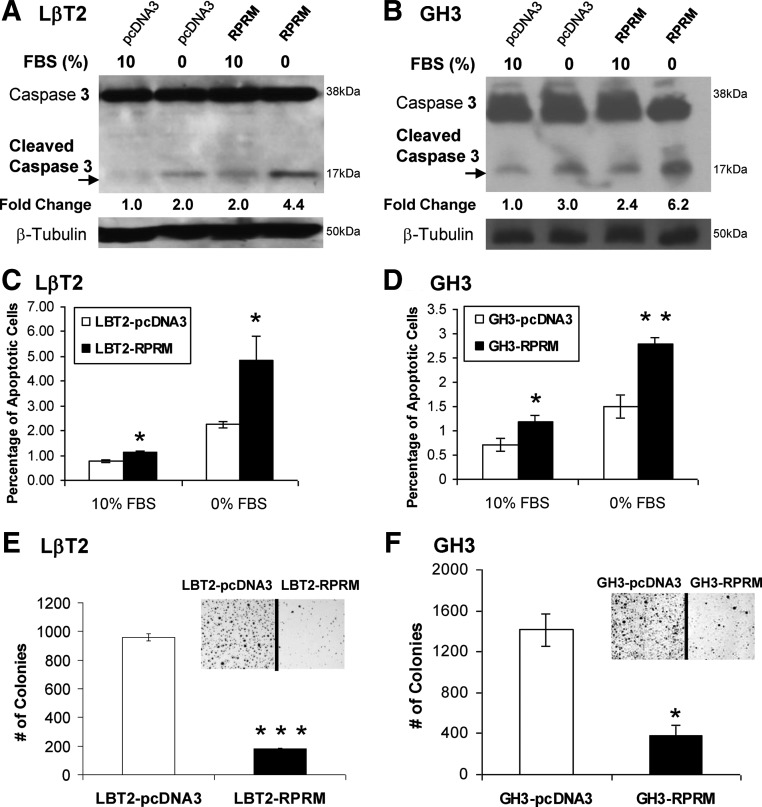Fig. 4.
Effects of Rprm on cell survival and tumorigenicity. A and B, Overexpressed of Rprm amplifies serum withdrawal-induced apoptosis in LβT2 and GH3 as assessed by cleaved caspase-3. Cells stably expressing vector or Rprm-Flag were cultured in growth-replete (10% serum) or -deficient (0% serum) for 48 h and lysates harvested. Immunoblots were probed for total and cleaved caspase-3 as an index of apoptotic activity. β-Tubulin was used as a loading control. Panels A and B show representative immunoblots of n = 3 experiments for each cell type showing similar results. C and D, Overexpressed of Rprm amplifies serum withdrawal-induced apoptosis in LβT2 and GH3 as assessed by Hoechst staining of nuclear condensation of cells. Cells stably expressing vector or Rprm-Flag were cultured in growth-replete (10% serum) or -deficient (0% serum) for 48 h and stained with Hoechst. Experiments were repeated three times. *, P < 0.05; **, P < 0.01). E and F, Modulating Rprm levels represses gonadotrope colony formation in LβT2 and GH3 pituitary cells. Cells were transiently transfected with vector and Rprm and then cultured in serum-replete conditions containing G418. Colonies were stained using Diff-Quik stain set and counted after 14–21d at ×20 image under Zeiss Axiovert 200 microscope. Photomicrographs of colonies were taken at ×2 using Olympus BX51 mounted Microfire digital camera. *, P < 0.05; ***, P < 0.00001.

